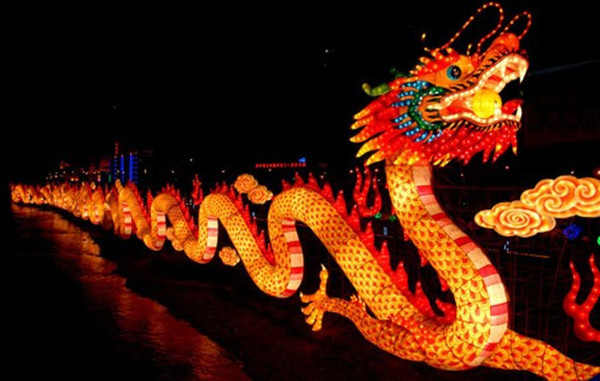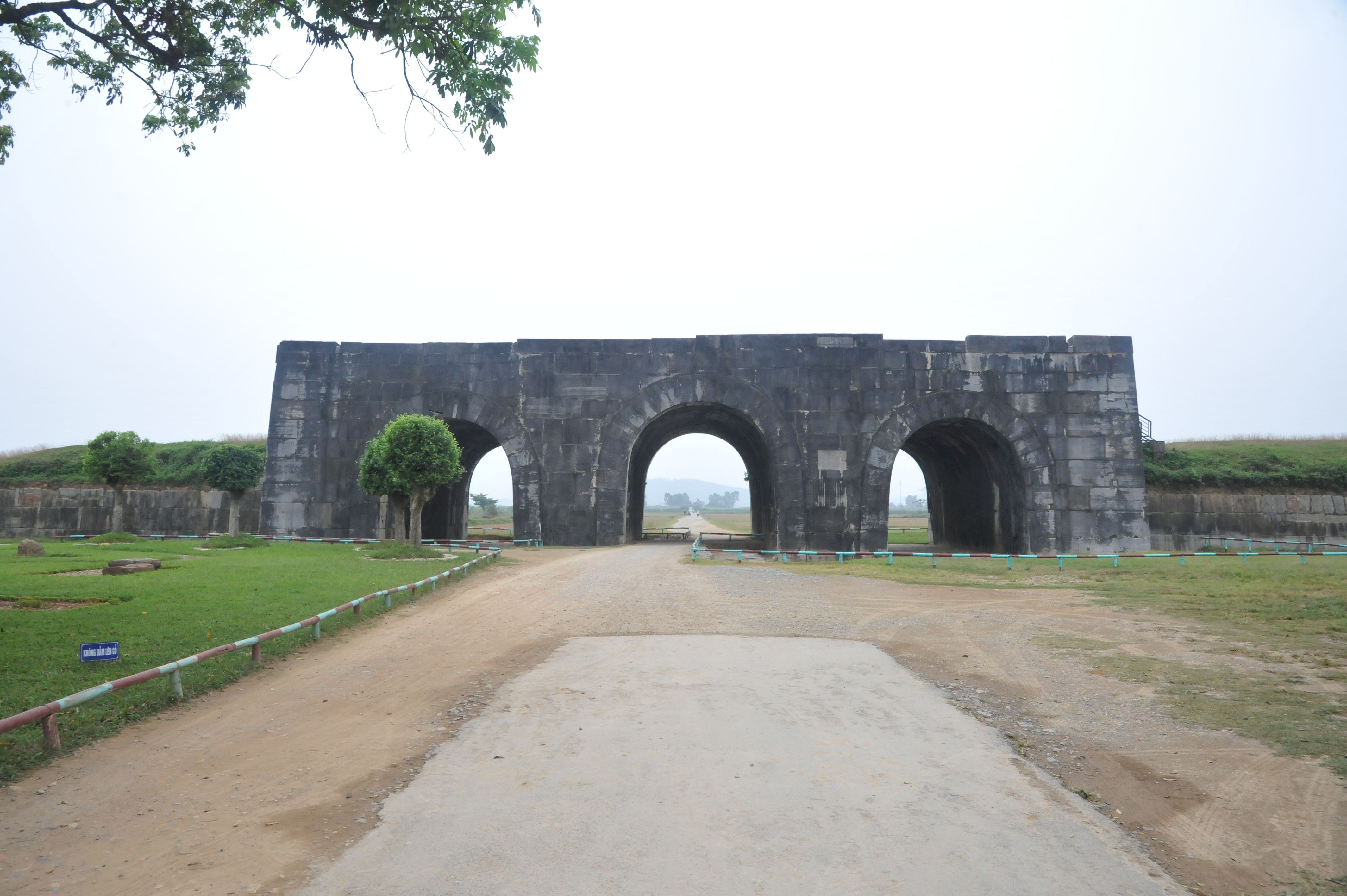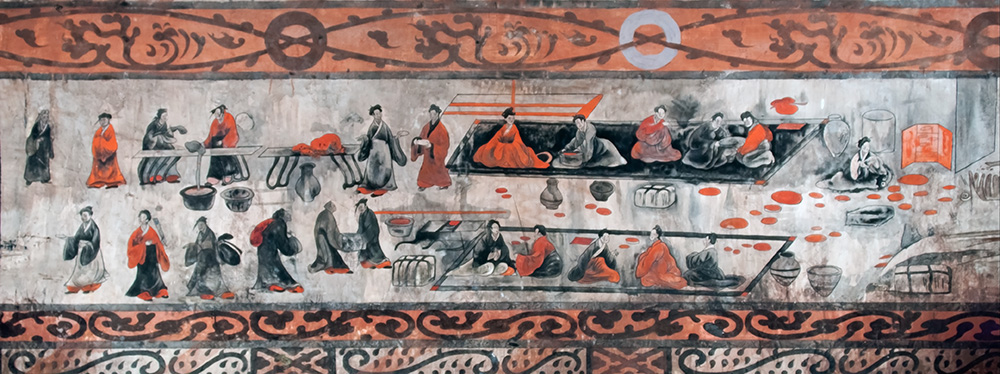|
Temple Name
Temple names are posthumous titles accorded to monarchs of the Sinosphere for the purpose of ancestor worship. The practice of honoring monarchs with temple names began during the Shang dynasty in China and had since been adopted by other dynastic regimes in the Sinosphere, with the notable exception of Japan. Temple names should not be confused with era names (年號), regnal names (尊號) or posthumous names (謚號). Modern academia usually refers to the following rulers by their temple names: Chinese monarchs from the Tang to the Yuan dynasties, Korean rulers of the Goryeo (until AD 1274) and Joseon dynasties, and Vietnamese rulers of the Lý, Trần, and Later Lê dynasties (with the Hồ and Later Trần dynasties as exceptions). Numerous individuals who did not rule as monarch during their lifetime were posthumously elevated to the position of monarch by their descendants and honored with temple names. For example, Cao Cao was posthumously honored as an emp ... [...More Info...] [...Related Items...] OR: [Wikipedia] [Google] [Baidu] |
East Asian Cultural Sphere
The East Asian cultural sphere, also known as the Sinosphere, the Sinic world, the Sinitic world, the Chinese cultural sphere, the Chinese character sphere encompasses multiple countries in East Asia and Southeast Asia that were historically influenced by Chinese culture. According to academic consensus, the East Asian cultural sphere is made up of four entities: Greater China, Japan, Korea, and Vietnam. Other definitions sometimes include Mongolia and Singapore, because of limited historical Chinese influences or increasing modern-day Chinese diaspora. The East Asian cultural sphere is not to be confused with the Sinophone world, which includes countries where the Chinese-speaking population is dominant. Imperial China was a regional power and exerted influence on tributary states and neighboring states, among which were Japan, Korea, and Vietnam. These interactions brought ideological and cultural influences rooted in Confucianism, Buddhism, and Taoism. During classical ... [...More Info...] [...Related Items...] OR: [Wikipedia] [Google] [Baidu] |
Hồ Dynasty
The Hồ dynasty (Vietnamese: , chữ Nôm: 茹胡; Sino-Vietnamese: ''Hồ triều, chữ Hán:'' 胡 朝) was a short-lived Vietnamese dynasty consisting of the reigns of two monarchs, Hồ Quý Ly (胡季犛) in 1400–01 and his second son, Hồ Hán Thương (胡漢蒼), who reigned the kingdom of Đại Ngu from 1401 to 1406. The practice of bequeathing the throne to a designated son (not simply passing it on to the eldest) was similar to what had happened in the previous Trần dynasty and was meant to avoid sibling rivalry. Hồ Quý Ly's eldest son, Hồ Nguyên Trừng, played his part as the dynasty's military general. In 2011, UNESCO declared the Citadel of the Hồ Dynasty in Thanh Hóa Province a world heritage site. Hồ Quý Ly (c. 1335 – c. 1407) Origin and background The Hồ/Hú family originated around modern-day Zhejiang province in the Southern Tang dynasty, which controlled much of southeast China, around the 940s. China was then in the midst ... [...More Info...] [...Related Items...] OR: [Wikipedia] [Google] [Baidu] |
Mongol Empire
The Mongol Empire of the 13th and 14th centuries was the largest contiguous land empire in history. Originating in present-day Mongolia in East Asia, the Mongol Empire at its height stretched from the Sea of Japan to parts of Eastern Europe, extending northward into parts of the Arctic; eastward and southward into parts of the Indian subcontinent, attempted invasions of Southeast Asia and conquered the Iranian Plateau; and westward as far as the Levant and the Carpathian Mountains. The Mongol Empire emerged from the unification of several nomadic tribes in the Mongol homeland under the leadership of Temüjin, known by the more famous title of Genghis Khan (–1227), whom a council proclaimed as the ruler of all Mongols in 1206. The empire grew rapidly under his rule and that of his descendants, who sent out invading armies in every direction. The vast transcontinental empire connected the East with the West, and the Pacific to the Mediterranean, in an enforced '' Pax M ... [...More Info...] [...Related Items...] OR: [Wikipedia] [Google] [Baidu] |
Möngke Khan
Möngke ( mn, ' / Мөнх '; ; 11 January 1209 – 11 August 1259) was the fourth khagan-emperor of the Mongol Empire, ruling from 1 July 1251, to 11 August 1259. He was the first Khagan from the Toluid line, and made significant reforms to improve the administration of the Empire during his reign. Under Möngke, the Mongols conquered Iraq and Syria as well as the kingdom of Dali (modern-day Yunnan). Appearance According to William of Rubruck, Möngke Khan was a man of medium height. Early life Möngke was born on 11 January 1209, as the eldest son of Genghis Khan's teenaged son Tolui and Sorghaghtani Beki. Teb Tengri Khokhcuu, a shaman, claimed to have seen in the stars a great future for the child and bestowed on him the name Möngke, "eternal" in the Mongolian language. His uncle Ögedei Khan's childless queen Angqui raised him at her orda (nomadic palace). Ögedei instructed Persian scholar Idi-dan Muhammed to teach writing to Möngke. On his way back home ... [...More Info...] [...Related Items...] OR: [Wikipedia] [Google] [Baidu] |
Jiajing Emperor
The Jiajing Emperor (; 16September 150723January 1567) was the 12th Emperor of the Ming dynasty, reigning from 1521 to 1567. Born Zhu Houcong, he was the former Zhengde Emperor's cousin. His father, Zhu Youyuan (1476–1519), Prince of Xing, was the fourth son of the Chenghua Emperor (reigned from 1464 to 1487) and the eldest son of three sons born to the emperor's concubine, Lady Shao. The Jiajing Emperor's era name, "Jiajing", means "admirable tranquility". Early years Born as heir apparent of a vassal prince, Zhu Houcong was not brought up to succeed to the throne. However, the throne became vacant in 1521 after the sudden death of the Hongzhi Emperor's son, the Zhengde Emperor, who did not leave an heir. Prior to the Zhengde Emperor's death, the line of succession was as follows: * '' Zhu Jianshen, the Chenghua Emperor (1447–1487)'' ** ''Unnamed son (1466–1466)'' ** ''Zhu Youji (1469–1472)'' ** '' Zhu Youcheng, the Hongzhi Emperor (1470–1505)'' *** Zhu Houzha ... [...More Info...] [...Related Items...] OR: [Wikipedia] [Google] [Baidu] |
Hongxi Emperor
The Hongxi Emperor (16 August 1378 – 29 May 1425), personal name Zhu Gaochi (朱高熾), was the fourth Emperor of the Ming dynasty, reigned from 1424 to 1425. He succeeded his father, the Yongle Emperor, in 1424. His era name "Hongxi" means "vastly bright". Biography Zhu Gaochi was born on 16 August 1378 and was educated by prominent Confucian tutors. He often acted as regent in Nanjing or Beijing during his father's northern military campaigns. He was uninterested in military matters but had prowess in archery. Already in May 1421, during the reign of the Yongle Emperor, an order was issued for the suspension of Zheng He's maritime expeditions, apparently on account of their cost (although the order apparently did not affect the 6th voyage of Zheng He, staged around that time). Zhu Gaochi, as soon as he was enthroned as the Hongxi Emperor in September 1424, cancelled Zheng He's maritime expeditions permanently, arguably burned down the fleet or left the ships to decompose ... [...More Info...] [...Related Items...] OR: [Wikipedia] [Google] [Baidu] |
Ming Dynasty
The Ming dynasty (), officially the Great Ming, was an Dynasties in Chinese history, imperial dynasty of China, ruling from 1368 to 1644 following the collapse of the Mongol Empire, Mongol-led Yuan dynasty. The Ming dynasty was the last orthodox dynasty of China ruled by the Han Chinese, Han people, the majority ethnic group in China. Although the primary capital of Beijing fell in 1644 to a rebellion led by Li Zicheng (who established the short-lived Shun dynasty), numerous rump state, rump regimes ruled by remnants of the House of Zhu, Ming imperial family—collectively called the Southern Ming—survived until 1662. The Ming dynasty's founder, the Hongwu Emperor (r. 1368–1398), attempted to create a society of self-sufficient rural communities ordered in a rigid, immobile system that would guarantee and support a permanent class of soldiers for his dynasty: the empire's standing army exceeded one million troops and the naval history of China, navy's dockyards in Nanjin ... [...More Info...] [...Related Items...] OR: [Wikipedia] [Google] [Baidu] |
Yongle Emperor
The Yongle Emperor (; pronounced ; 2 May 1360 – 12 August 1424), personal name Zhu Di (), was the third Emperor of the Ming dynasty, reigning from 1402 to 1424. Zhu Di was the fourth son of the Hongwu Emperor, the founder of the Ming dynasty. He was originally enfeoffed as the Prince of Yan () in May 1370,Chan Hok-lam.Legitimating Usurpation: Historical Revisions under the Ming Yongle Emperor (r. 14021424). ''The Legitimation of New Orders: Case Studies in World History''. Chinese University Press, 2007. . Accessed 12 October 2012. with the capital of his princedom at Beiping (modern Beijing). Zhu Di was a capable commander against the Mongols. He initially accepted his father's appointment of his eldest brother Zhu Biao and then Zhu Biao's son Zhu Yunwen as crown prince, but when Zhu Yunwen ascended the throne as the Jianwen Emperor and began executing and demoting his powerful uncles, Zhu Di found pretext for rising in rebellion against his nephew. Assisted in large ... [...More Info...] [...Related Items...] OR: [Wikipedia] [Google] [Baidu] |
Han Dynasty
The Han dynasty (, ; ) was an Dynasties in Chinese history, imperial dynasty of China (202 BC – 9 AD, 25–220 AD), established by Emperor Gaozu of Han, Liu Bang (Emperor Gao) and ruled by the House of Liu. The dynasty was preceded by the short-lived Qin dynasty (221–207 BC) and a warring interregnum known as the ChuHan contention (206–202 BC), and it was succeeded by the Three Kingdoms period (220–280 AD). The dynasty was briefly interrupted by the Xin dynasty (9–23 AD) established by usurping regent Wang Mang, and is thus separated into two periods—the #Western Han, Western Han (202 BC – 9 AD) and the #Eastern Han, Eastern Han (25–220 AD). Spanning over four centuries, the Han dynasty is considered a golden age (metaphor), golden age in Chinese history, and it has influenced the identity of the History of China, Chinese civilization ever since. Modern China's majority ethnic group refers to themselves as the "Han Chinese, Han people", the Sinitic langu ... [...More Info...] [...Related Items...] OR: [Wikipedia] [Google] [Baidu] |
Emperor Xian Of Han
Emperor Xian of Han (2 April 181 – 21 April 234), personal name Liu Xie (劉協), courtesy name Bohe, was the 14th and last emperor of the Eastern Han dynasty in China. He reigned from 28 September 189 until 11 December 220. Liu Xie was a son of Liu Hong (Emperor Ling) and was a younger half-brother of his predecessor, Liu Bian (Emperor Shao). In 189, at the age of eight, he became emperor after the warlord Dong Zhuo, who had seized control of the Han central government, deposed Emperor Shao and replaced him with Liu Xie. The newly enthroned Liu Xie, historically known as Emperor Xian, was in fact a puppet ruler under Dong Zhuo's control. In 190, when a coalition of regional warlords launched a punitive campaign against Dong Zhuo in the name of freeing Emperor Xian, Dong Zhuo ordered the destruction of the imperial capital, Luoyang, and forcefully relocated the imperial capital along with its residents to Chang'an. After Dong Zhuo's assassination in 192, Emperor Xian fell ... [...More Info...] [...Related Items...] OR: [Wikipedia] [Google] [Baidu] |
Emperor Huan Of Han
Emperor Huan of Han (; 132 – 25 January 168) was the 27th emperor of the Han dynasty after he was enthroned by the Empress Dowager and her brother Liang Ji on 1 August 146. He was a great-grandson of Emperor Zhang. He was the 11th Emperor of the Eastern Han Dynasty. After Emperor Zhi was poisoned to death by the powerful official Liang Ji in 146, Liang Ji persuaded his sister, the regent Empress Dowager Liang to make the 14-year-old Liu Zhi, the Marquess of Liwu, who was betrothed to their sister Liang Nüying (), emperor. As the years went by, Emperor Huan, offended by Liang Ji's autocratic and violent nature, became determined to eliminate the Liang family with the help of eunuchs. Emperor Huan succeeded in removing Liang Ji in 159 but this only caused an increase in the influence of these eunuchs over all aspects of the government. Corruption during this period had reached a boiling point. In 166, university students rose up in protest against the government and calle ... [...More Info...] [...Related Items...] OR: [Wikipedia] [Google] [Baidu] |
Cao Wei
Wei ( Hanzi: 魏; pinyin: ''Wèi'' < : *''ŋjweiC'' < Eastern Han Chinese: *''ŋuiC'') (220–266), known as Cao Wei or Former Wei in historiography, was one of the three major states that competed for supremacy over China in the Three Kingdoms period (220–280). With its capital initially located at , and thereafter , the state was ... [...More Info...] [...Related Items...] OR: [Wikipedia] [Google] [Baidu] |









.jpg)